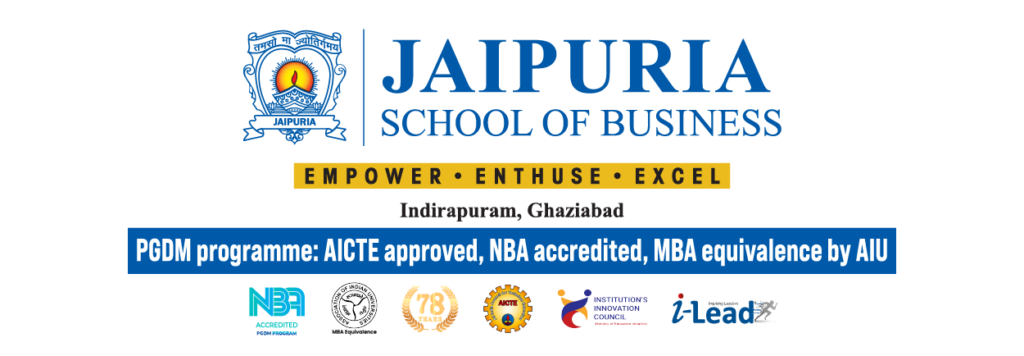Introduction:
The globalization of markets, coupled with technological advancements and geopolitical complexities, has heightened the vulnerability of supply chains to various risks and disruptions. From natural disasters and geopolitical tensions to pandemics and cyber-attacks, organizations face a myriad of threats that can disrupt the flow of goods and services and undermine business continuity. In response, the concept of supply chain resilience has gained prominence as organizations seek to fortify their supply chains against potential risks and uncertainties. Drawing upon research and perspectives from JSB Ghaziabad, top colleges for pgdm in delhi ncr, this article delves into the strategies and best practices for building resilient supply chains in today’s dynamic business environment.
Understanding Supply Chain Resilience:
Supply chain resilience refers to the ability of a supply chain to anticipate, adapt to, and recover from disruptions while maintaining continuous operations and delivering value to customers. Unlike traditional approaches focused solely on risk mitigation, supply chain resilience encompasses a broader set of strategies aimed at enhancing the flexibility, agility, and robustness of supply chain networks. At esteemed PGDM colleges in the region, scholars and practitioners explore the multifaceted nature of supply chain resilience, emphasizing the importance of proactive risk management, strategic collaboration, and adaptive capacity in building resilient supply chains.
Strategies for Mitigating Risks:
Effective risk mitigation requires a multifaceted approach that addresses both internal and external vulnerabilities across the supply chain. At premier PGDM colleges in the region, researchers and industry experts advocate for the adoption of comprehensive resilience-building strategies, including:
- Diversification of Suppliers: Relying on a single source for critical inputs increases the vulnerability of supply chains to disruptions. By diversifying the supplier base and establishing relationships with multiple vendors, organizations can mitigate the risks associated with supplier dependencies and ensure a more robust supply chain network.
- Supply Chain Mapping and Visibility: Lack of visibility into upstream and downstream supply chain activities can impede organizations’ ability to identify and respond to potential risks effectively. Through supply chain mapping and digital technologies such as blockchain and Internet of Things (IoT), organizations can enhance transparency and visibility across the supply chain, enabling real-time monitoring and proactive risk management.
- Inventory Optimization: Maintaining excessive inventory levels can strain working capital and increase storage costs, while insufficient inventory can leave organizations vulnerable to stockouts and disruptions. By leveraging demand forecasting models, inventory optimization techniques, and just-in-time inventory management practices, organizations can strike a balance between inventory levels and service levels, thereby enhancing supply chain resilience.
- Collaborative Partnerships: Collaboration among supply chain partners is essential for enhancing resilience and responsiveness in today’s interconnected business environment. Through strategic partnerships, information sharing, and joint risk management initiatives, organizations can build trust and cooperation across the supply chain ecosystem, enabling swift coordination and response during disruptions.
- Technology Adoption: Emerging technologies such as artificial intelligence (AI), machine learning, and predictive analytics hold tremendous potential for enhancing supply chain resilience. By leveraging advanced analytics tools and predictive modeling techniques, organizations can anticipate potential risks, identify mitigation strategies, and optimize supply chain operations in real-time.
- Business Continuity Planning: Developing robust business continuity plans and crisis management protocols is essential for ensuring organizational resilience in the face of disruption. At leading PGDM colleges in the region, students are equipped with the knowledge and skills needed to develop comprehensive business continuity plans, conduct risk assessments, and implement contingency measures to safeguard supply chain operations.
Challenges and Future Directions:
Despite the importance of supply chain resilience, organizations face numerous challenges in effectively implementing resilience-building strategies. From resource constraints and legacy systems to cultural barriers and geopolitical uncertainties, the path to building resilient supply chains is fraught with challenges that require a holistic and collaborative approach. Moreover, as supply chains become increasingly globalized and interconnected, the need for cross-functional collaboration, risk-sharing mechanisms, and agile decision-making processes becomes ever more critical.
Looking ahead, the future of supply chain resilience lies in embracing innovation, agility, and adaptability as core tenets of supply chain management. By fostering a culture of continuous learning, experimentation, and collaboration, organizations can proactively anticipate and respond to emerging risks and disruptions, thereby enhancing their resilience and competitiveness in today’s volatile and uncertain business environment.
Conclusion:
Supply chain resilience is a strategic imperative for organizations seeking to thrive in today’s dynamic and uncertain business environment. Through research and perspectives from JSB Ghaziabad, PGDM colleges in delhi NCR region, this article has shed light on the strategies and best practices for building resilient supply chains. By adopting a proactive and holistic approach to risk management, leveraging advanced technologies, and fostering collaborative partnerships, organizations can enhance the robustness, agility, and responsiveness of their supply chains, thereby ensuring business continuity and sustaining competitive advantage in the face of evolving challenges and disruptions.

